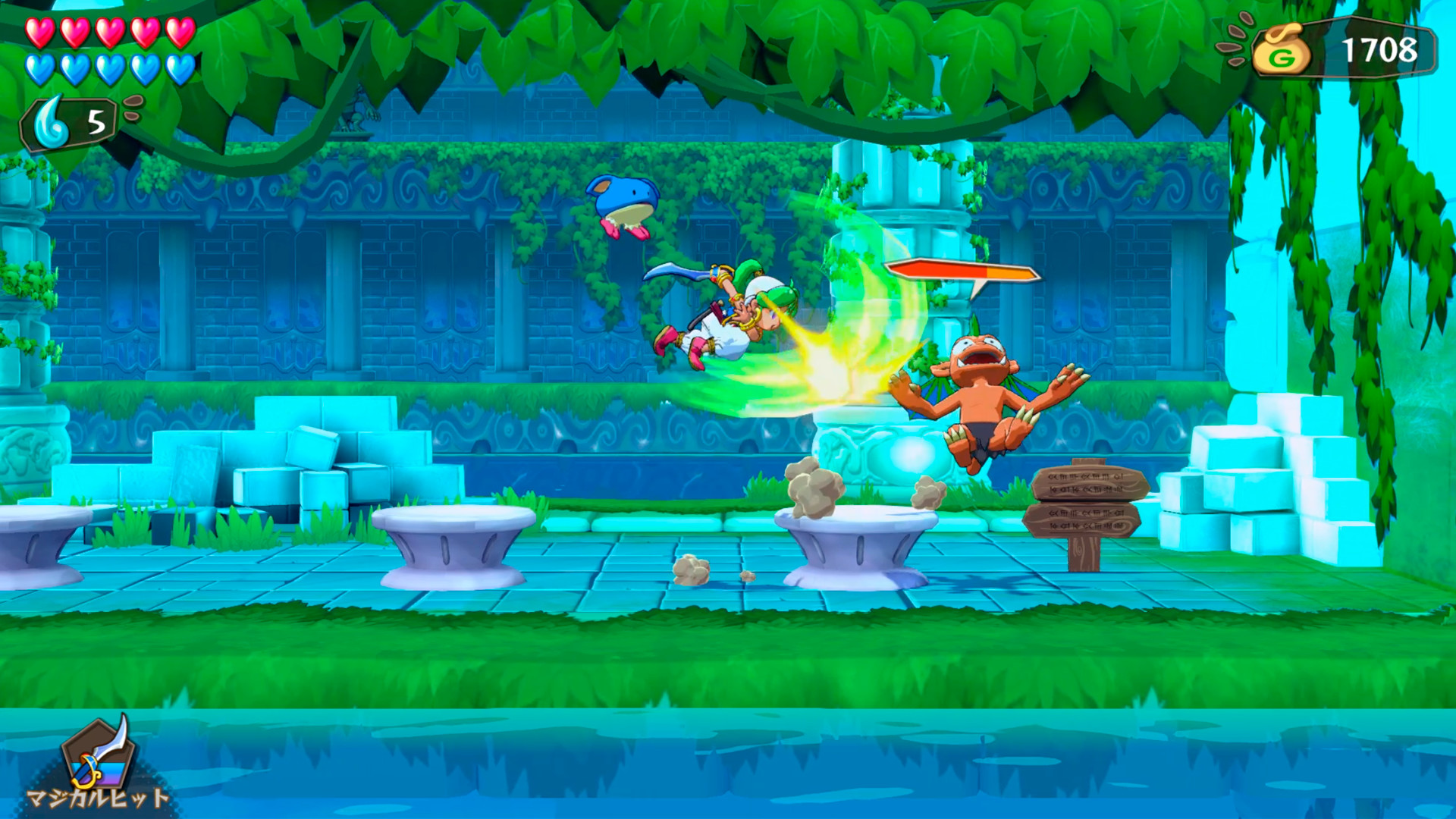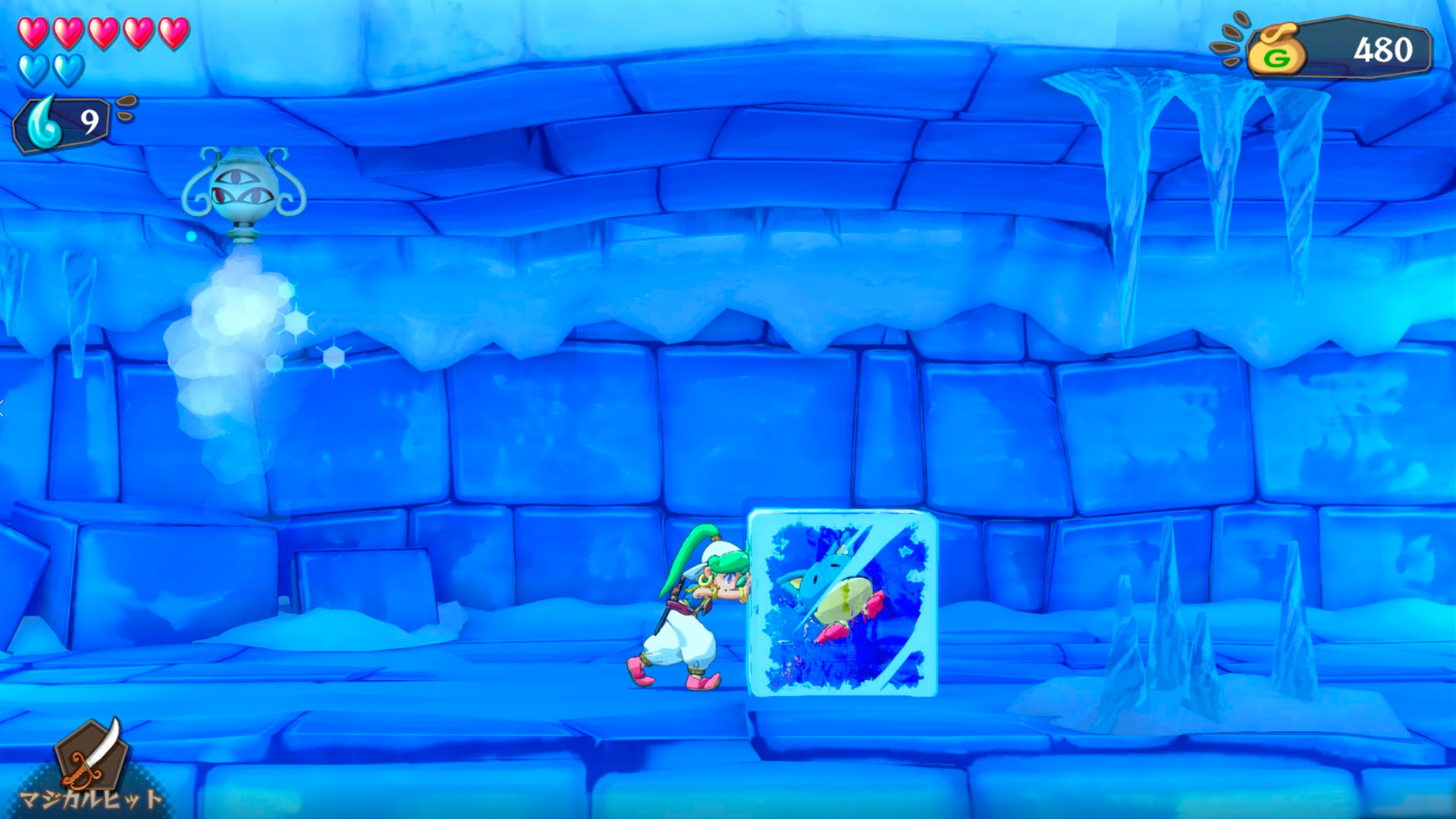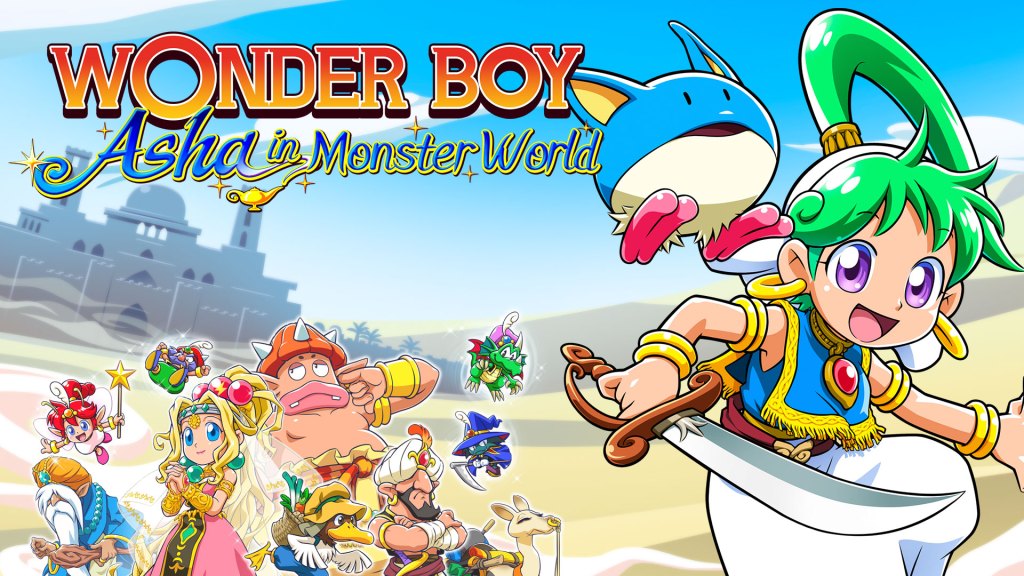The Monster World franchise has a confusing naming history befitting any of the recently rebooted franchises that decided to throw numbers into a randomizer and see what came out next. Monster World IV is actually the sixth and final game from the ’80s/’90s era, although many western fans would be oblivious to its existence; the SEGA Mega Drive game never made it out of Japan aside from a token Wii Virtual Console release.
Wonder Boy: Asha in Monster World is a remake of that platformer that has been put together by many of the staff from the original and now defunct developer Westone Bit Entertainment, including Wonder Boy creator Ryuichi Nishizawa. Now at ArtDink, the developers wanted to “create a game that stays true to the spirit of the original titles”. While some aspects of the game have been dragged into the modern era, like its hand-drawn cartoonish graphics and orchestral soundtrack, others have stayed firmly in 1994.
Wonder Boy: Asha in Monster World Review – Tied to the ’90s
Like most platforming games of the time, Asha in Monster World has a basic plot that gives a purpose to the title without getting in the way of the gameplay. Asha is a young girl who wishes to become a warrior. Her parents finally allow her to leave the village and prove her abilities by finding a badge of courage in the monster-filled Tower of Silence. With the badge obtained, she finds herself in the town of Rapadagna where she is told a dark force has trapped four elemental spirits in their worlds. She needs to defeat the darkness if she’s to stop the world from succumbing to evil.
The short 3-4 hour story takes Asha through a variety of environments from lush jungle to icy caverns with a distinct lack of friction. There’s even a world that looks like she fell inside a one-armed bandit. Each level is filled with unique enemies, like the Egyptian warriors inside the Ice Pyramid and the extremely angry, spinning, human-sized coins in Sky Castle. All have a limited and repetitive attack pattern and they’re easy to defeat. The mid- and end-level bosses are the most interesting foes but also have distinct attack patterns, meaning there isn’t ever any really difficult encounters despite Asha’s basic moveset.

Asha has kept her simple sword attack, as well as up and down directional attacks, from the original game. She can also block basic attacks and projectiles with her shield, but still has no ability to dodge. New to the remake is a super magic attack, literally a more powerful sword swing, that can be charged up by hitting enemies with basic attacks for a short period of time. One thing that did need improving was that Asha can bounce off enemies if she runs or jumps into them, often without damage. This did lead to a couple of irritating moments where Asha was pinned against the side of the playable area by several enemies, stuck in a seemingly endless bounce loop. I did eventually manage to get out of these but not without far more significant damage than if the bounce didn’t exist. It was the only hint of a bug that I ever found.
There is no instant health regeneration in this game. Instead, health must be restored in the more traditional 90’s way by finding healing elixirs and herbs, picking up hearts from downed enemies, or spending coins at vending machines to purchase healing items. Extra hearts can also be earned by collecting tear drops hidden throughout every level. Some are hidden in incredibly obscure places to encourage exploration. Players can return to most of the levels to find things they missed previously with the exception of Estafan, Estaf Plateau, and the Tower of Silence. There’s also a point of no return late into the game, at which point players can’t get back to any of the previous levels. Completionists be warned.
Wonder Boy: Asha in Monster World Review – Making Friends
A little way into her journey, Asha finds herself accompanied by a pet pepelogoo, a strange flying Pokemon-esque creature. While he can also help out during key moments in battle, his main purpose is to help solve basic puzzles. He can activate switches, make hot vents safe, melt ice and allow Asha to double jump by holding onto his legs. Unfortunately after every double jump, Asha lets go of the pepelogoo. In instances where there is a series of double jumps, like climbing up the mountain path, pepelogoo has to be called back over every time. It’s another old game trope that should really have been left behind bearing in mind how most games make double jumps far easier to perform.
The game’s puzzles are fairly simple, ranging from simple navigation to working out the correct sequence to open a door. The exception to this was a quiz from the Ice Temple’s Phoenix. Now I’m a naturally observant person, but this asked obscure details about the characters, enemies and even the contents of Asha’s inventory that most would find impossible. “Do you have an elixir?” Yes I do. “Does the Lamp Spirit have ears?” Umm, I think so… “Is it not true the Sage does not like saunas?” Wait… what?? Answering any question incorrectly meant starting again with a completely new set of questions. The length of time spent trying to get past the Phoenix was about equal to the amount of time spent getting there along the Desert Road.

Asha returns to Rapadagna at the end of every quest and the town acts as a central hub. Each of the spirit levels can be reached and replayed from here. It’s the closest the game gets to hinting at the metroidvania roots of other games in the franchise, but this one remains a platformer. Asha can return to the hub at any time of the game. As this doesn’t leave a checkpoint behind, doing so in the middle of a level will mean redoing everything up to that point. The upside to this is a new addition to the remake – the ability to save the game at any time. Saves are no longer limited to finding the Sage of Save in random spots throughout the game, something the Sage himself will joke about when you talk to him.
There’s lots of different characters to meet throughout the game, although many of them only seem to have single lines of dialogue. At Rapadagna, one will trade gold bars for gold coins, while those can be spent in the shops on life-giving bracelets, better swords, and hardier shields. Other townsfolk will give gifts and/or advice. The problem is not every sword and shield can be purchased in a single game because there just isn’t enough gold… at least not in the first playthrough anyway. Getting to Rapadagna under certain conditions in the second playthrough will unlock the Magic Merchant, who will give Asha more than enough money to get everything. Other original Easter eggs still exist too, the game’s trophies giving hints towards them.
Wonder Boy: Asha in Monster World Review – The Verdict
Those wanting to compare the new version of the game to the original can do so if they buy the retail version, which comes with a download code for the original Monster World IV. For the few improvements there have been, though, I’d recommend sticking with the remake; the game just seems more refined even if it does keep most of the ’90s tropes. As an (almost) bug free experience, those looking for a more traditional game will love it. However, those who prefer modern platformers will probably want to avoid it.
Wonder Boy: Asha in Monster World review code provided by publisher. For more information, please read our Review Policy.
-
New save system
-
Stays true to the original game
-
Some gameplay tropes needed leaving behind
-
Enemy bounce seemed buggy in places




